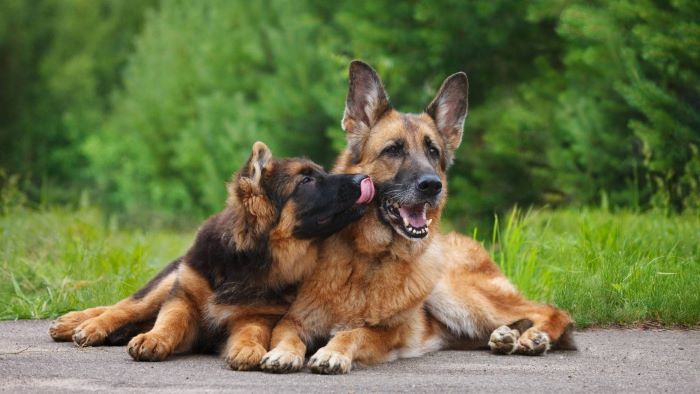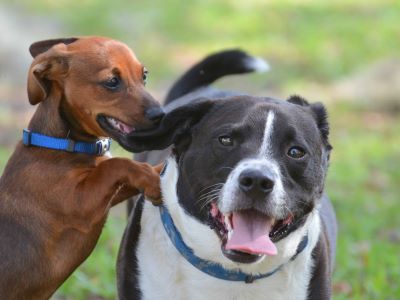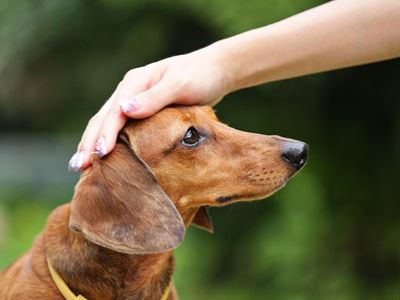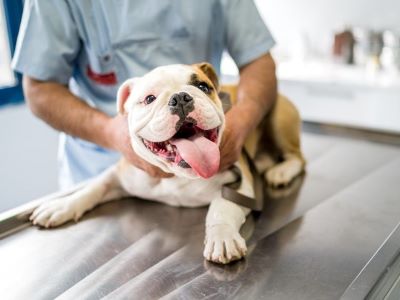Bringing a new puppy into your home can be an exciting time. However, that excitement can quickly turn to frustration if your adorable new pup starts bullying your older, more mellow dog. But how do you know if your puppy’s behaviour crosses the line from normal puppy antics to true bullying? So, why my puppy is bullying my older dog?
Normal puppies undergo a phase of testing boundaries and figuring out the household structure. They may sometimes play roughly, nib, grab toys, or pester your older dog. Though annoying, this is not necessarily bullying. Bullying involves targeted, repeated behaviours that dominate the older dog and make them afraid. Signs include aggressive biting, constant pestering, not allowing the older dog to move freely, and the older dog acting scared and avoiding the puppy.
Understanding normal developmental stages will help you identify true bullying behaviour that needs to be managed. With time and training, you can curb bullying and help the dogs coexist peacefully.

Signs Your Puppy is Bullying Your Older Dog
To determine if your puppy’s rough behaviour warrants the “bully” label, watch for these warning signs:
- Nipping or biting your older dog repeatedly, especially sensitive areas like ears, tails legs
- Jumping on your older dog when they are resting or sleeping
- Constantly chasing or pestering the older dog, not letting them alone
- Stealing toys, treats or food away from the older dog
- Not allowing the older dog to move freely around the house
- The older dog seems afraid of the puppy and avoids them
- Older dog hiding, cowering, or trembling around the puppy

You may notice the older dog becomes more irritable, anxious or depressed. They may hide or eliminate inside to avoid encounters with the puppy bully. If your older dog exhibits any of these fearful behaviours, your puppy is likely crossing the line.
Why Puppy Bullying Occurs

To curb puppy bullying, it helps to understand some of the reasons behind the behaviour[1]:
Establishing Dominance – Puppies may bully to establish their position in your home’s pack hierarchy. They target the older dog to climb the ranks.
Lack of Training – Puppies who do not know the house rules or are not trained on proper social behaviour may resort to bullying.
Boredom – Under-stimulated pups with pent-up energy may pick on the older dog for entertaining.
Too Much Energy – Some extremely energetic puppies struggle to control their impulses and end up playing too roughly.
Without proper training and management, these behaviours can quickly spiral into an unhealthy bully-victim dynamic between your dogs. However, there are effective ways to prevent or curb puppy bullying.
How to Manage a Bullying Puppy
If your pup is bullying incessantly, take steps to manage their behaviour when interacting with your older dog:
- Increase exercise, playtime, and training sessions to burn off puppy energy.
- Use baby gates or crates to separate the dogs when unsupervised.
- Work on commands like “leave it” and “enough” so you can interrupt unwanted behaviour.
- Rotate access to toys, beds and other resources so the puppy learns to share.
Correcting Bullying Behaviour

To discourage bullying, implement these training techniques:
Withhold Attention – If your puppy starts picking on your older dog, immediately isolate them without any attention for 1-2 minutes.
Direct and Redirect – Get a high-value toy to distract your puppy then redirect their energy into a game of fetch or training sessions.
Be Consistent – Set clear rules and consistently enforce them using timeouts or training each time bullying occurs.
Use Positive Reinforcement – When your puppy plays gently or leaves the older dog alone, reward the treats and praise.
Do not use any physical punishment, as that will only make the behaviour worse. Remain calm but firm as you implement these positive correction techniques.
Helping Your Older Dog Cope
In addition to training the puppy, focus on helping your older dog through this difficult transition:
- Provide safe spaces like crates or rooms where your older dog can relax away from the puppy.
- Make sure your older dog still gets quality one-on-one time with you every day.
- Consider calming supplements or pheromone diffusers to ease your older dog’s stress.
- Stick to your older dog’s schedule and routine as much as possible.
- Lavish your older dog with extra love, praise and affection.
With time and consistency, your dog’s relationship will improve as the puppy matures. But seek professional help if your older dog shows prolonged signs of fear, anxiety or trauma.
When to Enlist Professional Help for Puppy Bullying

Consult an accredited dog trainer or veterinary behaviourist if:
- The bullying continues despite consistent training and corrections.
- Your puppy shows bullying behaviour or aggression toward humans too.
- Your older dog exhibits traumatic symptoms like hiding, loss of appetite, aggression or house soiling that last more than 2 weeks.
- Unresolved bullying can mentally damage dogs long-term. A professional can observe your puppy’s behaviour and design an effective customized training plan. They can also determine if medication may help ease your older dog’s trauma.
Foster a Happy Multi-Dog Home
With time, prevention and training, your puppy will likely outgrow their bullying phase. But you need patience – it can take 6 months to over a year! Focus on setting both dogs up for success with these tips:
- Use 100% positive reinforcement training methods. Harsh discipline will backfire.
- Establish a predictable routine that provides adequate exercise, training, affection and downtime for both dogs based on their unique needs.
- Provide separate spaces where each dog can enjoy alone time, toys and beds.
- Ensure all interactions between the dogs are calm and positive. Praise good behaviour profusely.
- Never leave the dogs unsupervised until the puppy matures and bullying ceases completely.
- Consult a trainer at the first sign of trouble – nibbling problems in the bud is crucial.
With close management, training consistency, and time, you can guide your puppy to become a polite older sibling and foster a peaceful multi-dog home. The bullying phase will not last forever as long as you take steps to address it properly. Stay positive!
FAQs
Why my puppy is bullying my older dog?
Separate them immediately and contact your vet. Get them checked for any injuries and discuss medication options to help ease tensions. Keep them separated until you can consult a trainer or behaviourist.
I have kids. Could my puppy’s bullying bullying behaviour turn into aggression towards my children?
It’s possible. Bullying and dominance issues can extend to humans too. Get professional help immediately if your puppy shows any aggressive behaviour towards family members. Never leave small children unsupervised with a bullying puppy.
How much exercise does my bullying puppy need each day?
Most puppies require 45-60 minutes of active play and exercise daily, including training time. Bullying pups may need even more to burn energy and prevent undesirable behaviours.
My older dog seems depressed and lethargic now. What can I do?
Consult your vet to rule out medical issues. If it’s behavioural, focus on engaging your older dog more through play, walks, training and bonding time alone with you. Consider anti-anxiety mediation.
Can I just rehome my bulling puppy?
Rehoming should be a very last resort, as it can lead to further behaviour issues. Work with a professional first to try connecting the bullying. Make rehoming decisions carefully.
Conclusion
A puppy bullying an older dog can be stressful, but take heart it is usually a temporary phase. With close management, training consistency, and time, you can curb negative behaviours and foster a happy multi-dog household. Focus on meeting each dog’s needs while minimizing bullying opportunities.
If problems persist, professional help is advised to prevent long-term trauma in either dog. With patience and dedication, you will get through this difficult puppy stage.
Reference:
- What to Do About a Dog That Bullies Other Dogs | pedMD



